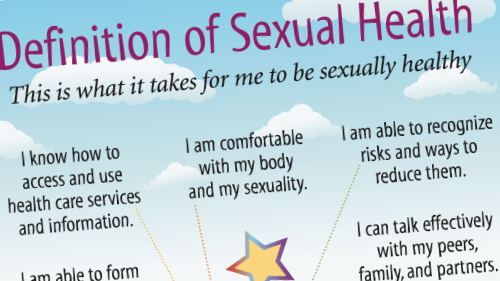Condoms and Dental Dams

Condom Use Steps
- Use a new latex or synthetic (polyurethane) condom for oral, anal, and vaginal sex — not "natural" or lambskin, which have tiny pores that allow STI transmission. Use a dental dam for vaginal or anal oral sex.
- Check the expiration date.
- Open the package with care — don't use teeth or sharp objects.
- Use a few drops of water-based lube inside (to increase sensitivity and prevent breakage).
- Wait until the penis is hard.
- If uncircumcised, pull back the foreskin.
- Leaving a little room at the tip, place the condom on the penis with the rolled side out. (If it does not roll down easily it may be on inside out — throw that condom away and start again with a new condom).
- Roll the condom all the way down the penis.
- Rub water-based lube on the outside of the condom (to increase sensitivity and prevent breakage).
- Keep the condom on during intercourse. If it comes off during sex, use a new one.
- After ejaculation, hold the condom at the base of the still-hard penis and withdraw.
- Remove the condom, wrap in a tissue and dispose of it in the trash (don't flush it in the toilet — condoms can cause problems in sewer systems).
Latex condoms are the only contraceptives that prevent transmission of sexually transmitted diseases (STIs) including HIV.* Used during vaginal, anal, or oral sex, these condoms are a highly effective defense against any STI that is transmitted through body fluids (such as HIV, chlamydia, gonorrhea, and trichomoniasis), and they reduce the risk of skin-to-skin transmission of STIs (such as genital herpes and syphilis) to the extent that they cover the affected area. For condoms to be effective, users must have the skills and knowledge to use them correctly and consistently.
Dental dams are small sheets of latex that are placed over the vulva or anus during oral sex to prevent STI transmission. Originally designed for dental work, they are now sometimes available for purchase where condoms are sold. A dam can also be made from a condom by cutting off the rim and tip to form a tube, then making one lengthwise cut to form a rectangle.
- Polyurethane condoms may be used if one partner has a latex allergy, however they have a higher breakage/slipping rate than latex [1].
Youth and Condom Use
Condoms are the most popular birth control method among sexually active teens [2]. Popularity does not necessarily translate to correct and consistent use, however. Adolescents are more likely than adults to experience condom failures, especially if they have not had formal education on how to use condoms [3].
Like adults, adolescents are more likely to use condoms in a casual relationship or hookup than in a relationship characterized by love and trust [4].
What a youth believes about a partner's attitude toward condoms will influence condom use. Communication between partners is key:
- When youth believe their partners disapprove of condoms, they are less likely to use them; when youth believe their partners approve of condoms, condom use is more likely [2].
- In one survey, 83% of young men said they would "gladly" wear a condom if their partners asked them to [5].
- The ability to communicate the desire to use condoms influences condom use [2].
Interventions that can positively affect the use of condoms include sex education with condom demonstrations and practice, sex education that helps youth learn to talk with a partner about condoms, interventions that help parents talk to their children about sex and condoms, clinic-based interventions, and condom availability programs. Success may also come from efforts to change perceptions and norms so that couples see condoms as an enjoyable, expected part of sex that does not detract from the sexual experience.
Resources for Educators
PrACTice Matters: The Case for Condom Education
Despite the need — and widespread support for sex education — condom demonstrations are often treated as controversial. This article makes the case for condom demonstrations and practice as part of a larger sexual health program. ACT for Youth.
Condoms
Detailed information about how to use external and internal condoms. American Sexual Health Association.
Condom Fact Sheet in Brief
Condom effectiveness relative to specific STIs is discussed. Centers for Disease Control and Prevention.
Condom
Answers questions youth ask about condoms, including benefits and disadvantages. Planned Parenthood.
References
- Williams, R. L., & Fortenberry, J. D. (2011). Update on adolescent condom use. Current Opinion in Obstetrics & Gynecology, 23(5), 350-354.
- American Academy of Pediatrics Committee on Adolescence. (2013). Policy statement: Condom use by adolescents. Pediatrics, 132(5), 973-981.
- Graham, C. A., Crosby, R. A., Sanders, S. A., & Yarber, W. L. (2005). Assessment of condom use in men and women. Annual Review of Sex Research, 16, 20-52.
- Feldstein Ewing, S. W., & Bryan, A. D. (2015). A question of love and trust? The role of relationship factors in adolescent sexual decision making. Journal of Developmental & Behavioral Pediatrics, 36(8), 628-634.
- National Campaign to Prevent Teen and Unplanned Pregnancy. (2010). That's what he said.






